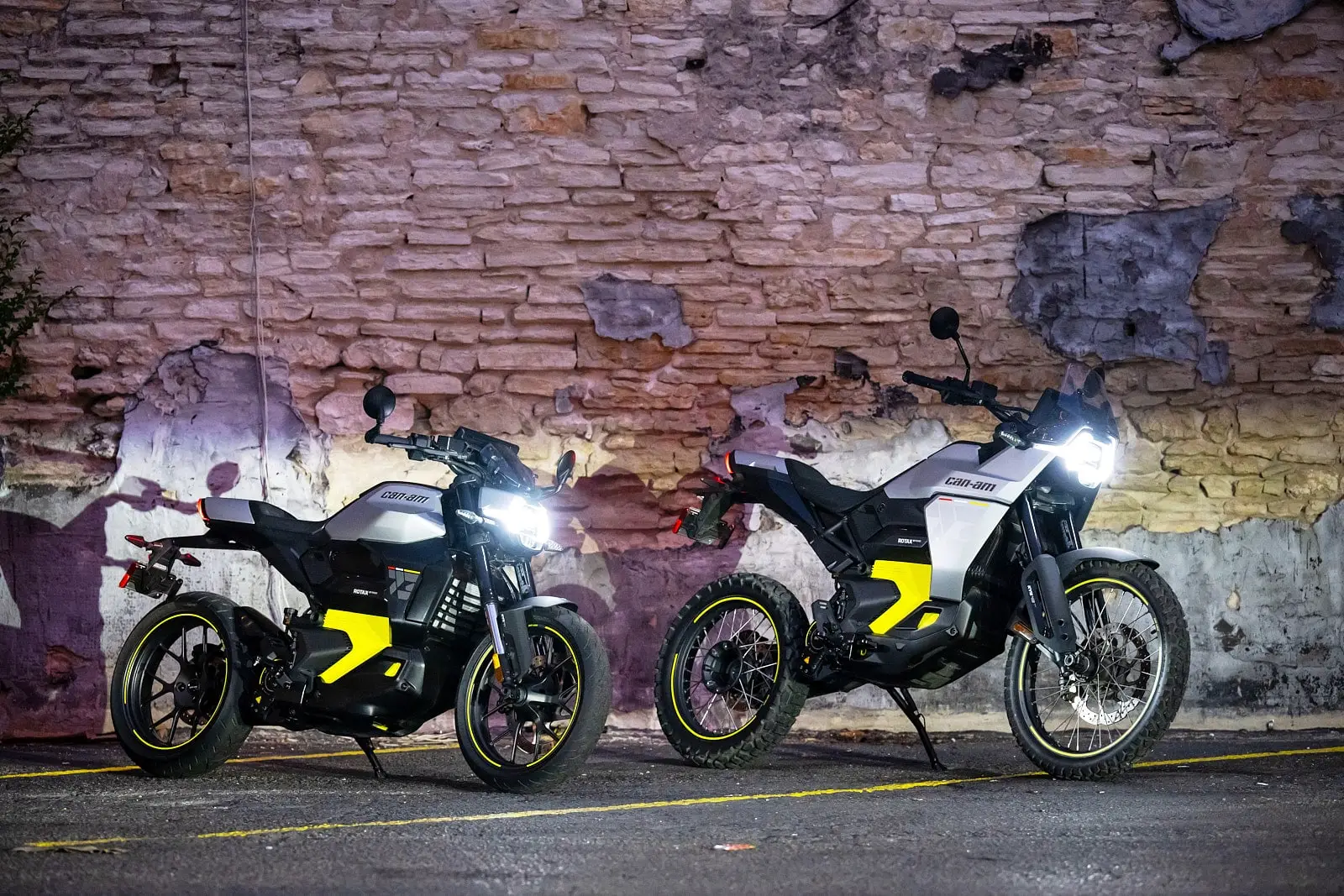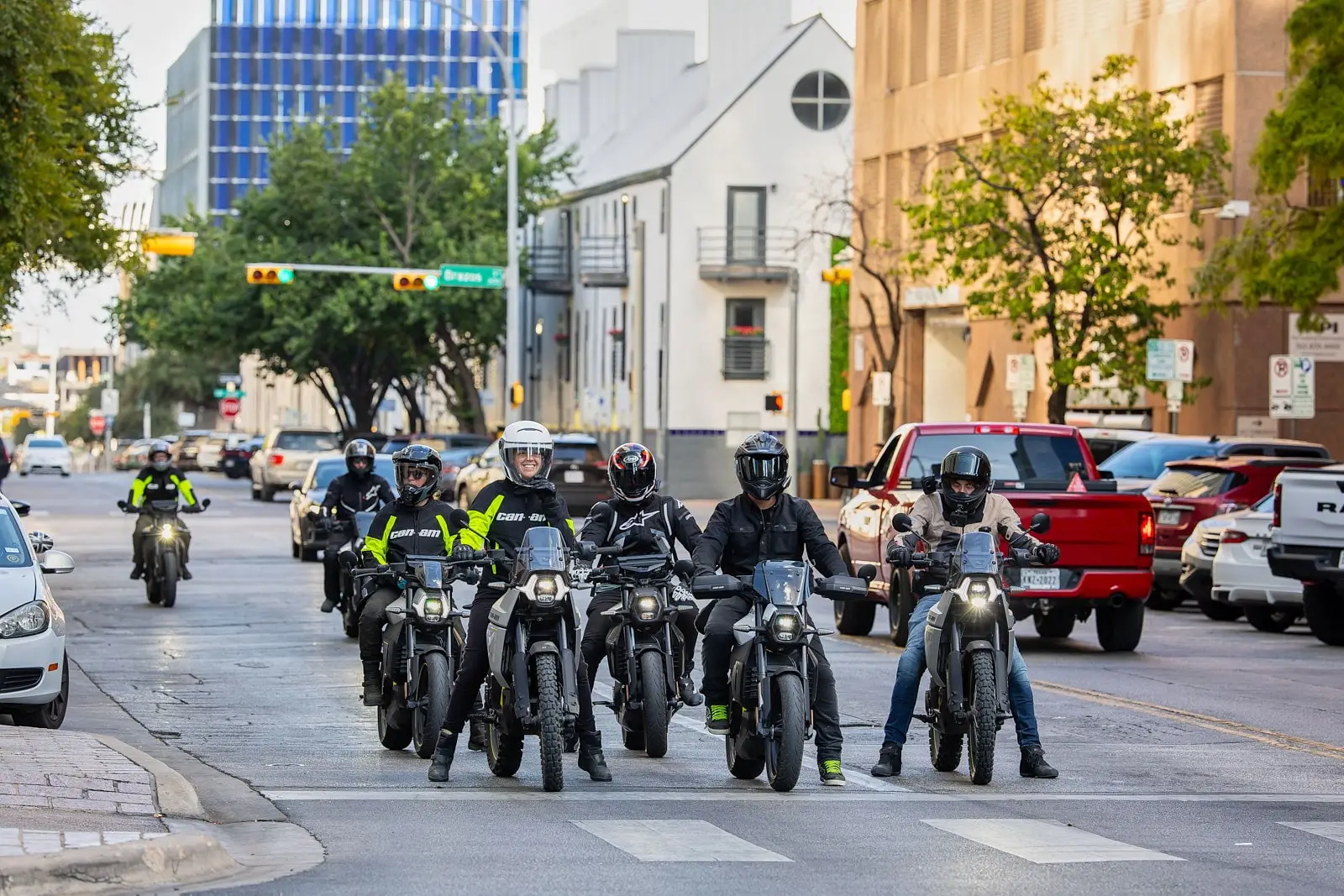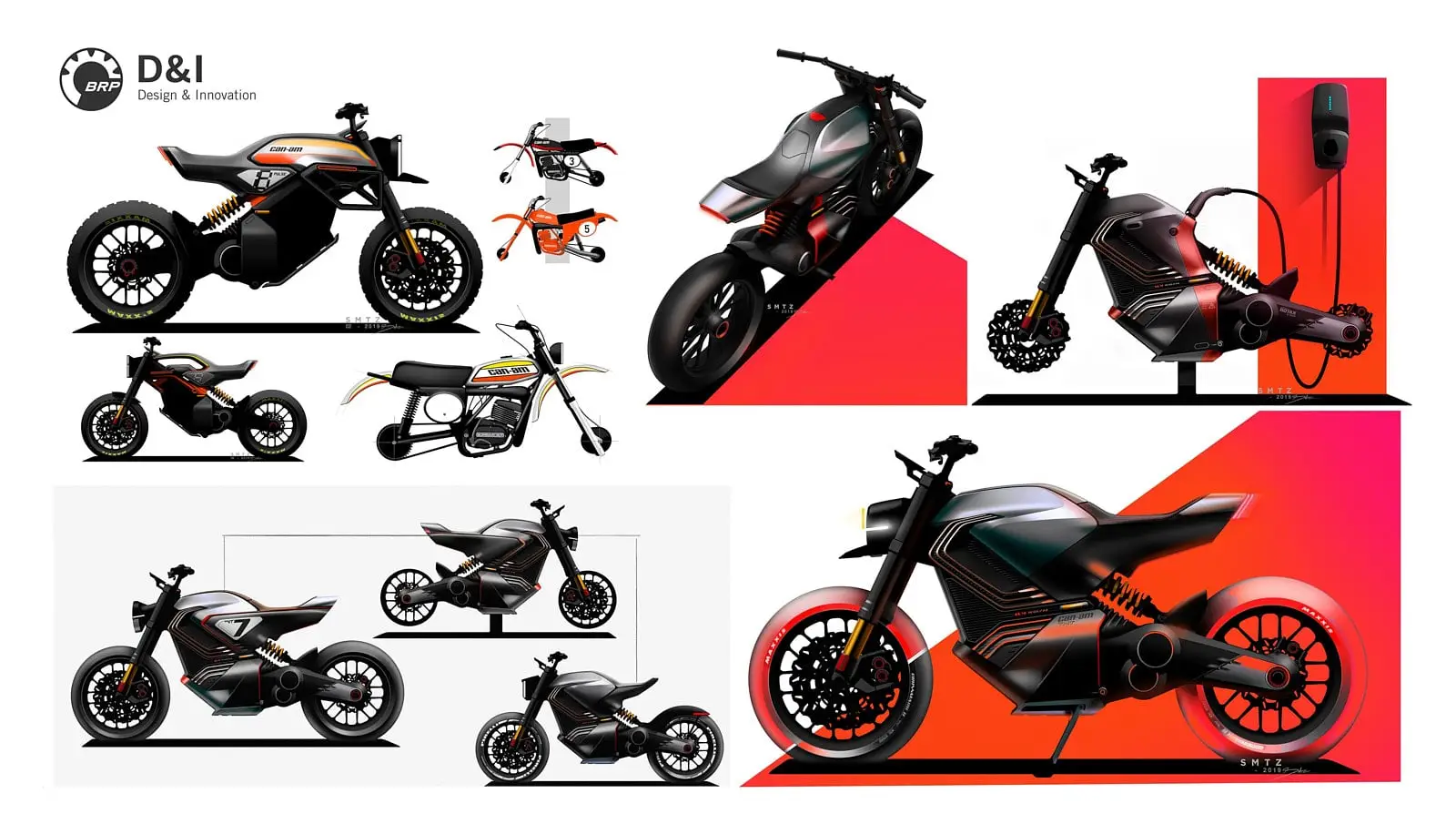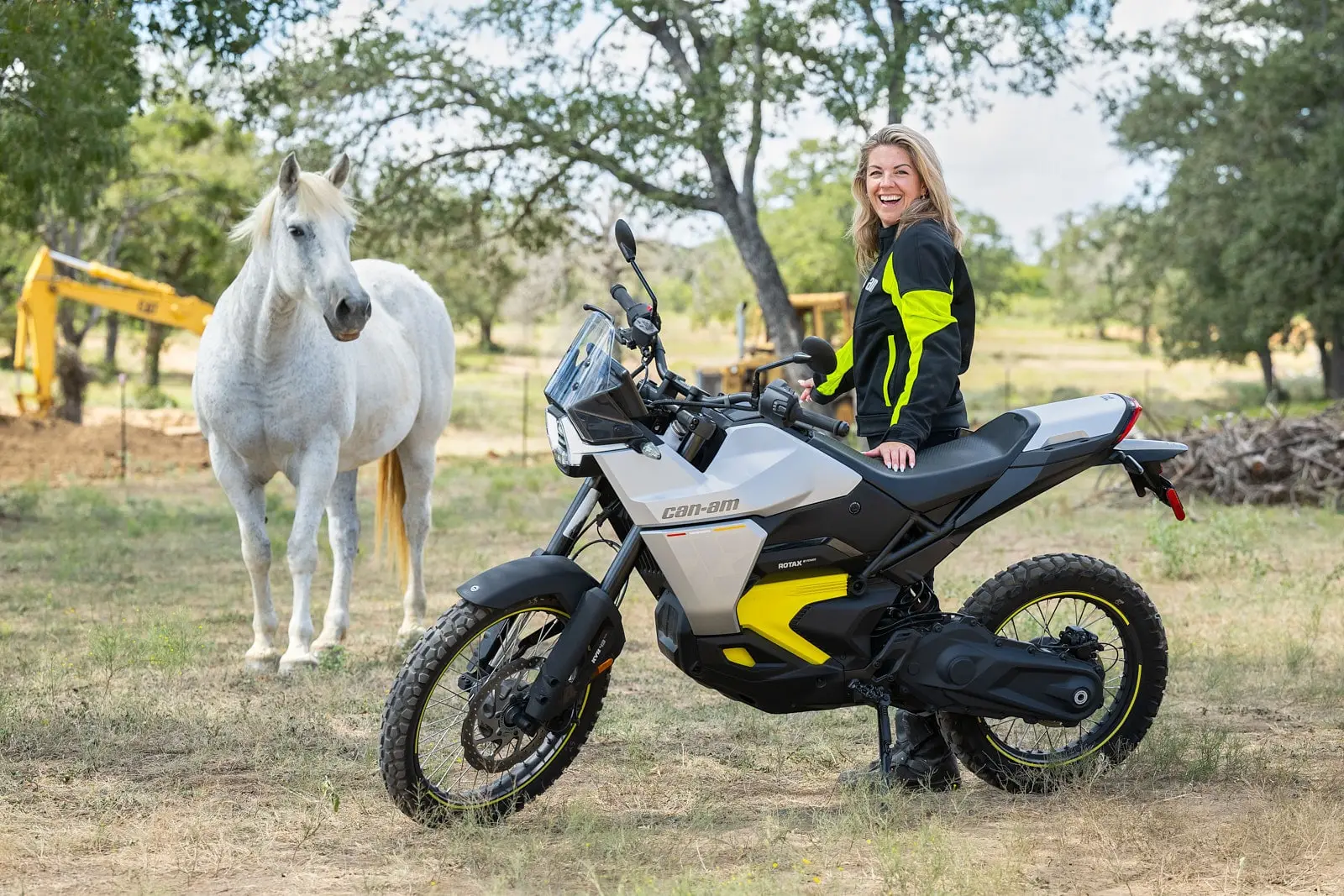Table of contents
ToggleIt was in the land of cowboys and the stunning region of Austin, Texas, that I finally had the chance to test Can-Am’s new electric motorcycles. Filled with high expectations, I was really excited to try them out in such a perfect setting. These two very different models offer something for everyone! The Origin is the dual-purpose model that allows you to easily switch from asphalt to gravel. The Pulse, on the other hand, is the ultimate sport-touring bike, perfect for cruising around town. That said, today I’m talking about the creation process behind these electric motorcycles.
Releasing a new model is a fairly routine task for manufacturers each year. However, in this first article of two, exceptionally, you will get an overview of the complexity and excitement behind launching a new product line. In the second part, you’ll finally get my impressions from the test rides!
Why Austin Is Ideal for Launching Can-Am Electric Motorcycles
In case you didn’t know, Austin is a leader in the world of electrification. This city is packed with electric technologies, especially with the presence of the Tesla factory located there. There’s even a fully autonomous taxi company that can take you wherever you want to go—NO DRIVER! Yes, really! The company is called Waymo; check out their website and you’ll see… it’s mind-blowing.

The energy, the people, and the essence of the city are made for this kind of event. The old town is juxtaposed next to the new, with glass buildings and towering skyscrapers. Its landscape is unique and offers a perfect introduction to talk about innovation and change.
BRP’s Innovative Marketing for Can-Am Electric Motorcycles
If you’re not interested in the creation process of these electric motorcycles, click here to check out the article on my test rides and the technical specs of each motorcycle.
This isn’t my first product launch. And yet, I’m always impressed by the precision and quality of BRP’s events. I have to say, the product presentation on the morning of the first day was more than interesting. We had the chance to chat with the engineers who designed the vehicles and even with the marketing team that worked on the branding. I must admit, I really enjoyed it.


We’re often invited to see and test new models of existing vehicles. This time, however, we were there for a brand-new product from A to Z. Can-Am’s approach to these test rides was interesting.
The Team Behind Can-Am’s Electric Motorcycles: Rapid Growth
First of all, you should know that the idea for these electric motorcycles was already brewing within BRP six years ago. We’re talking about a small team, by the way—just six people. But that number quickly doubled. Today, this project brings together more than 200 people across several countries. These teams worked in secret on developing the electric motorcycles for a long time before production began.
They conducted market studies to determine the target audience and identify gaps to fill. Everything was carefully examined even before starting the design process. In this regard, Can-Am engineers worked closely with the marketing team to create a product tailored to their target audience. In fact, the ergonomics were designed around the rider, not the battery. With the completely original engine design, the shape of the battery that fits the ergonomics of the bike, and more, nothing was left to chance. The goal was to satisfy the customer and create something innovative and efficient.
This is also the first time Can-Am is targeting two markets equally: Europe and North America. Of course, each of these markets has different strategies and needs, adding complexity to the process.
The Branding of Can-Am Electric Motorcycles: A Dark and Sleek Aesthetic
Branding is crucial. When launching a product, it’s important that the audience that we’re talking directly to them. But most importantly, they must relate and feel considered in order for them to develop a strong sense of belonging. The manufacturer from rural Quebec decided to innovate for the Pulse and Origin with a Sin City-style branding. It’s a bit dark, mysterious, and very sleek. The video is still under embargo, but I’ll add it to my article when it becomes available in February.

Who Are Can-Am Electric Motorcycles For?
After thoroughly studying the market, the recreational vehicle giant has successfully identified its target audience. It’s important to note that Can-Am does not intend to replace traditional motor vehicles. Instead, this BRP subsidiary aims to introduce new products to add to their lineup for motorcycle enthusiasts. The introduction of the Pulse and Origin electric motorcycles offers a different product that aligns with the core values of a whole new clientele. To achieve this, they conducted extensive studies with all types of motorcyclists to pinpoint exactly what they were missing.
Target Audience
- First-time users/pioneers. Aged 35 to 44, these users will appreciate adding these electric motorcycles to their vehicle fleet. They are looking for versatility.
- Motorcyclists aged 25 to 54. Like the previous group, these individuals will likely add the Pulse or Origin to their collection. However, this demographic is primarily seeking power and acceleration.
- Newcomers to the sport, aged 25 to 44. This group has a higher proportion of women compared to others, with nearly 40%. For them, it would be their very first motorcycle, and they are looking for an easy riding experience.

Innovation at the Heart of Can-Am’s Research and Development
What happens next? Well, after carefully identifying its target audience, Can-Am conducts market research and brainstorming sessions on design, lifestyle, and more. All this research fine-tunes the results and leads to the next phase, which is innovation and addressing unmet needs.
This stage of creation is to identify irritants from their existing products that these electric motorcycles could solve. This process also helps highlight certain strengths. The design team builds the foundation based on what stands out the most. These are the elements they need to focus on to succeed.
Designing a new vehicle from scratch is no easy task. But by assessing the needs, pain points, and positive aspects sought by the target audience, the design team manages to create something unique that ticks all the right boxes.

Can-Am Motorcycles Design: When Ergonomics Meets Electric Innovation
For the next step in the creation of these electric motorcycles the designers begin sketching the lines of these new vehicles. The constraints of the motorized components and ergonomics must be considered to achieve optimal ride quality. The proportions are carefully studied and optimized to provide a smooth and dynamic experience. In fact, the Pulse and Origin offer ergonomic triangles that are quite different from each other. Together, these electric vehicles cater to a wide range of people with varying body types and heights.

Can-Am’s Rigorous Testing
You can imagine that Can-Am’s creation team tested their electric motorcycles thoroughly before letting us ride them! Indeed, these were put through the wringer for years to fix any flaws and optimize every part.
Final Thoughts on the Design of the Pulse and Origin
As you can see, creating a new product is an impressive process that requires a tremendous amount of work and involvement on many levels.
That said, the most important part of the creation process is, of course, when enthusiasts can finally try it out and experience its many features and qualities. So, be sure to check out my review of the Pulse and Origin in the second part of this article next week!
—

